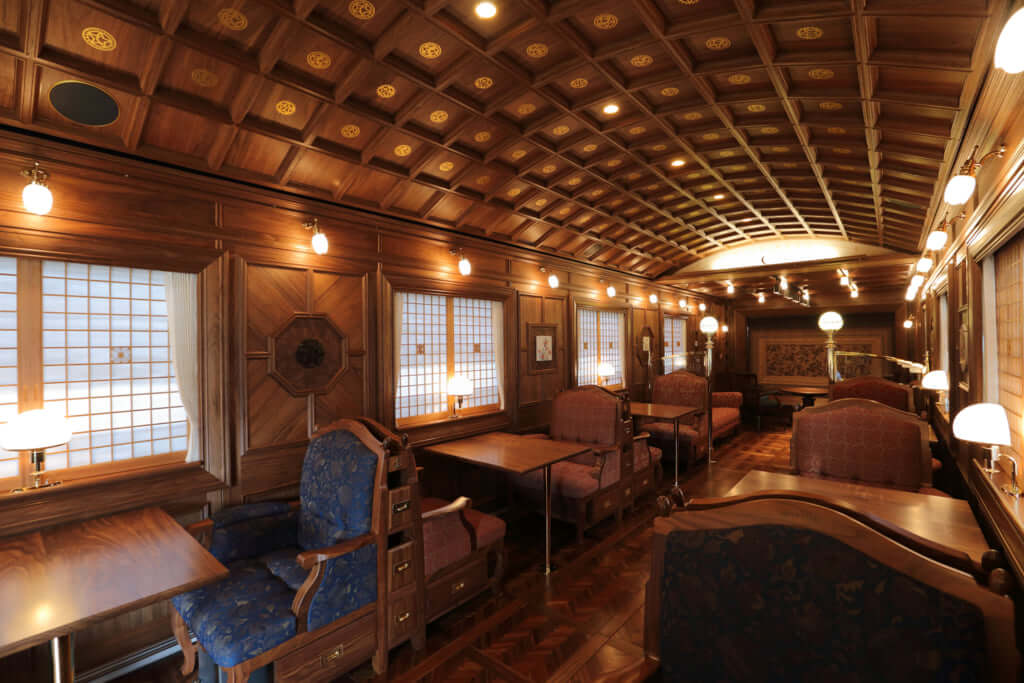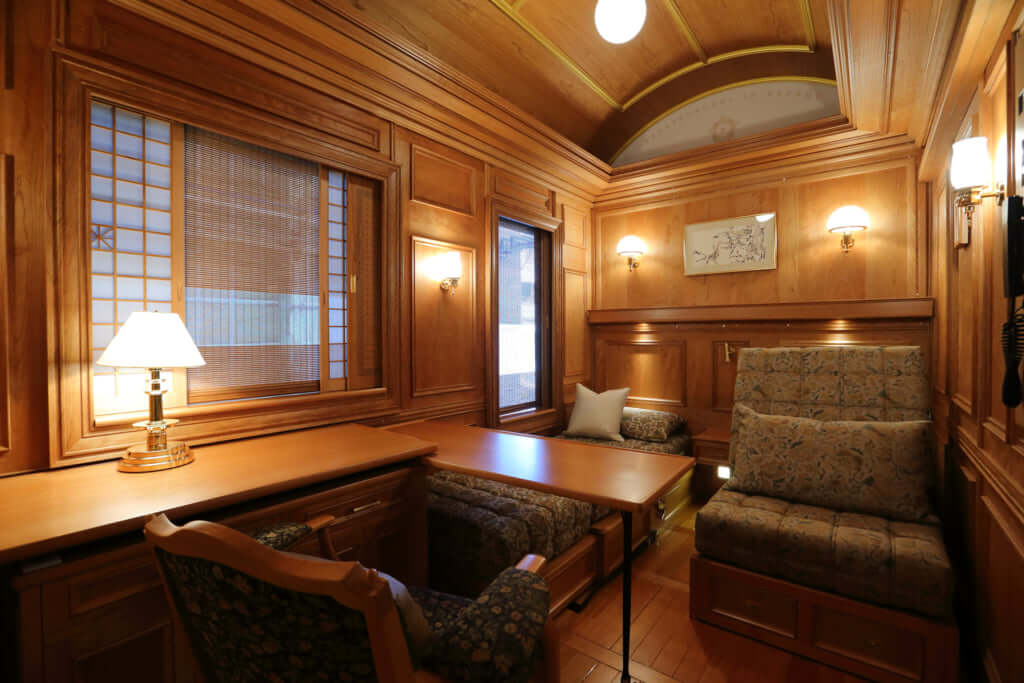Nanatsuboshi, the Japanese Railway Dream

Watching the landscape flash past through the window, letting yourself sit back and be lulled by the noise of the tracks… There’s something very particular about train journeys. This is even more true when onboard an extraordinary vehicle like the Nanatsuboshi, the treasure of regional company JR Kyushu.
With its Orient Express feel, a legendary train if ever there was one, the Nanatsuboshi, or ‘seven stars’ in English, traverses the island of Kyushu in south-west Japan. Passengers can sit comfortably, enjoying the Belle Époque atmosphere of this luxury travelling hotel and admiring Kyushu’s seven prefectures and an unobstructed view of the onsen at Beppu, the sunny coast of Miyazaki and Mount Aso. And, if you feel so inclined, why not escape from this bubble of comfort to go and discover some sites on foot during the various stops that punctuate the journey of this magnificent slow train.
A jewel in the crown of Japanese craftsmanship
The Nanatsuboshi is the work of Japanese designer Eiji Mitooka, who has already worked on various trains for the company including the Yufuin no Mori, a green train with a wooden interior that travels between Hakata and Beppu, and the Kawasemi Yamasemi, a little two-car train with a retro feel which runs between Kumamoto and Hitoyoshi.
The Nanatsuboshi has seven carriages, including one for the restaurant and another, the Blue-Moon, which has been turned into a piano bar. The train doesn’t only allow passengers to discover the region of Kyushu, but has also been designed to showcase Japanese craftsmanship and luxury items. The flooring has been made from wood of eight different kinds and the crockery, made from Kakiemon porcelain, comes from the workshops in Arita, the historical heart of Japanese ceramics since the beginning of the 17th century.
The meals showcase local products from the island and are made by well-known chefs who work in restaurants established in the cities through which the train passes. One such example is Michiko Kawano who works at Hosun, a restaurant in Oita and which is listed in the Michelin Guide.
Since 2013, passengers have been able to enjoy this Japanese splendour for two or four days in one of fourteen suites, two of which are luxury and equipped with shower screens made from Japanese cypress.
A rare luxury
However, this kind of experience has to be earned. The Nanatsuboshi was a victim of its own success, so JR Kyushu allocates tickets by way of a ballot, and passengers will have to wait for over a year for a chance to board this seven-star train, or indeed longer if you want to spend the night in the suite at the end of the train, which has a large bay window that makes you feel as though you’re right in the heart of nature.
The journey starts at Hanaka station in Fukuoka, the largest city on the island. After a welcome ceremony and something to eat in the Kinsei lounge on the second floor of the station, passengers take their seat on the Nanatsuboshi, before the train sets out on the rails in its brown and gold robe and travels through the contrasting landscapes of Kyushu.



-1024x683.jpg)


TRENDING
-
Yakumo Saryo: A Culinary Voyage in Tokyo
Shinichiro Ogata makes objects from glass, ceramics and bronze but is also a fantastic cook. Have a taste of both his talents at restaurant Yakumo Saryo.

-
WA BI GIN : (An Old) Affair of Passion
The Japanese distillery Hombo Shuzo, first known for their shoshu, decided to launch itself into artisanal production of gin. Thus, WA BI GIN was born.

-
Gome Pit, the Pop-Up Bar in a Waste Treatment Facility
Japan never ceases to surprise. Gome Pit is a pop-up bar with an unobstructed view over a pit where tonnes of waste are piled up before being incinerated.

-
A Japanese Tea Room Perched Atop a Rooftop
The building, in keeping with the minimalist style of its creator, offers a splendid view of Vancouver Bay and the surrounding mountains.

-
Discover Japanese Gastronomy Through The Solitary Gourmet Manga
This illustrated black and white album follows its lead through various bars, celebrating the Japanese art of living.





